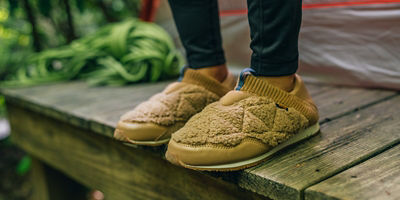
Gear
Tent: Rain likely? Load your tent (and raingear) on top so you can pitch it without unloading everything else first.
Sleeping Bags: Choose one rated to 10 degrees F below expected nighttime lows.
Sleeping Pads: Don’t forget a repair kit—and the pump if your pad needs one.
Camp Pillow: A puffy jacket stuffed into the hood of your sleeping bag makes a decent pillow in a pinch.
Headlamps and/or Lanterns: Make sure they’re fully charged, and/or pack spare batteries.
Camp Stove and Fuel: Pack a lighter even if your stove has an ignitor.
Cooking Pot and/or Skillet: Try a cast iron skillet for cooking over the campfire (or baking over coals).
Plates, Bowls, Mugs, Utensils: Pack these in a separate container, and you can throw them in dirty at the end.
Dishwashing Kit (biodegradable soap, sponge, wash bins): If water is scarce, use a few drops of chlorine in the rinse water and just dip and dry.
Water Bottles and/or Hydration Packs: Got a big crew? Label bottles with names to avoid spreading germs.
Water or Water Treatment (filter, UV pen, etc.): Call the campground or ranger station to check water availability before you go. Sometimes the water supply is seasonal.
Multitool: Perfect for cutting kindling, making simple gear repairs, slicing cheese, and opening bottles.
Plastic Zip-Top Bags: Handy for keeping small trash corralled, packing out used baby wipes, and storing leftovers.
Repair Kit: If nothing else, pack some duct tape. Patches, zip-ties, and wire are also handy.












